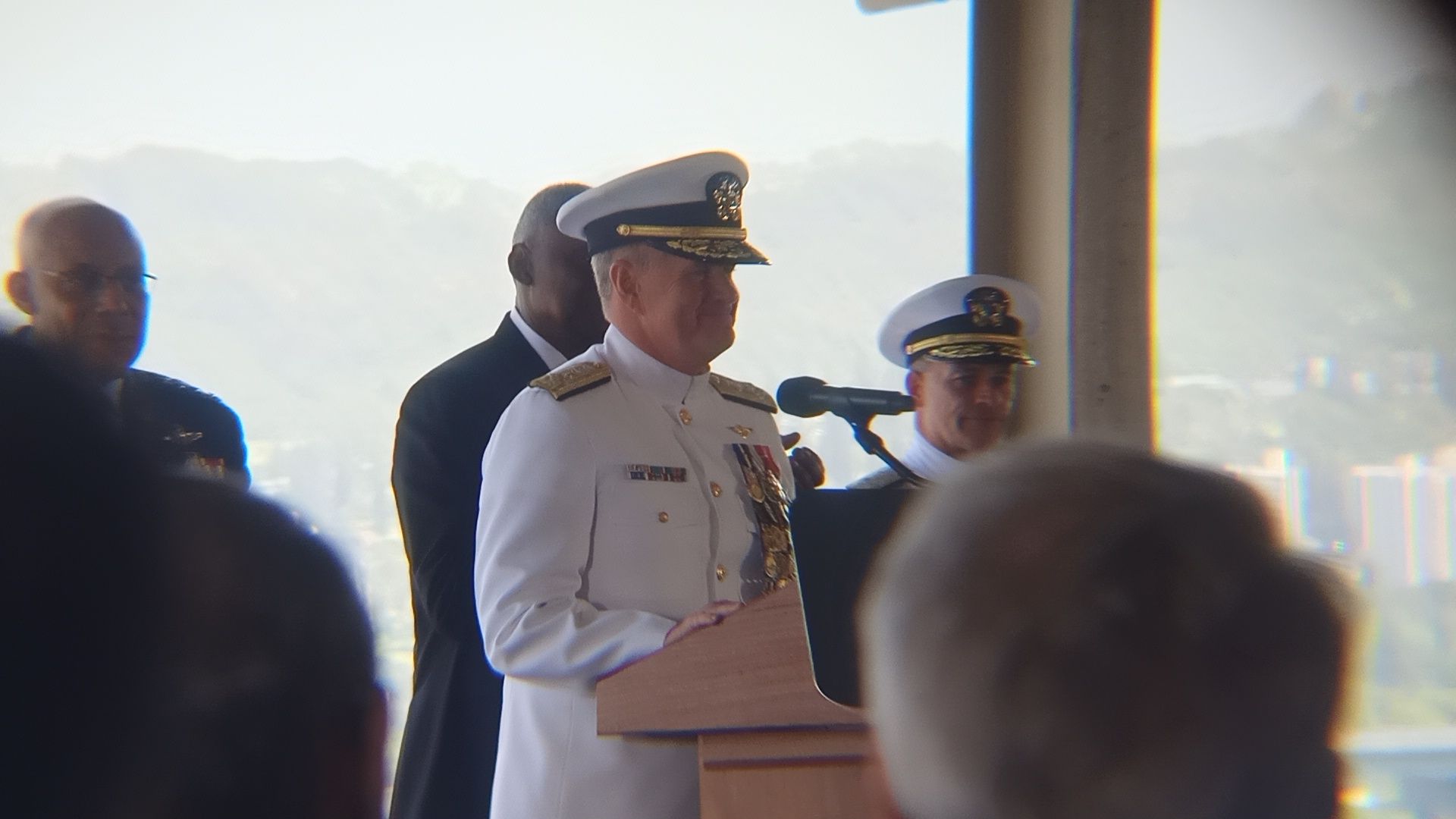New US Indopacom chief vows to help AFP in countering China's claims in West Philippine Sea

HONOLULU, Hawaii – Admiral Samuel J. Paparo, the newly installed 27th commander of the United States military’s Indo-Pacific Command (Indopacom), made a commitment to sustain their robust military cooperation with the Armed Forces of the Philippines (AFP) amid China’s increasing aggressive behavior in the West Philippine Sea (WPS).
Paparo succeeded Admiral John C. Aquilino, who retired after serving in the US military for 40 years. Aquilino worked closely with the AFP to build up its capabilities over the last three years as the Indopacom chief.
“Our world faces a complex problem set in the troubling actions of the People’s Republic of China [PRC] and its rapid build up of forces. We must be ready to answer the PRC’s increasingly intrusive and expansionist claims in the Indo-Pacific region,” Paparo said in his speech during the Change of Command ceremony at Joint Base Pearl Harbor-Hickam here on Friday, May 3 (US time).
Paparo, a native of Morton, Pennsylvania, said that the Indopacom’s partnership with allies and strategic partners, such as the Philippines, “makes us more capable and these relationships will help preserve peace in the Indo-Pacific.”
He said the command, together with partners, is “positioned to deny and defend against attempts to break the peace" accorded by the international rules-based order.
China has been claiming majority of the South China Sea, including parts of the waters within the Philippines’s 200-nautical mile exclusive economic zone (EEZ).
Last April 30, China Coast Guard (CCG) vessel “3305” fired a water cannon which hit the starboard astern of BRP Bankaw (MMOV-3004), a multi-mission offshore civilian patrol vessel of the Bureau of Fisheries and Aquatic Resources (BFAR) during a patrol operation in the waters near Bajo de Masinloc (Scarborough or Panatag Shoal).
Two more CCG vessels with bow numbers “3105” and “5303” employed their jet stream water cannons which hit BRP Bagacay (MRRV-4410), a Philippine Coast Guard (PCG) multi-role response vessel which accompanied BRP Bankaw.
The incident damaged the railing and canopy of the PCG vessel.
Such coercive and dangerous actions by the PRC were dubbed by Paparo as “ICAD”, a term that he said was originally coined by AFP chief General Romeo Brawner Jr., which he considers as a "friend," to refer to China’s grey zone tactics in the South China Sea.
China's grey zone tactics refer to military and non-military coercive actions in the South China Sea.
“My friend, General Brawner from the Republic of the Philippines, has a phrase called ICAD and he has renamed grey zone, which sounds otherwise benign and dull, into ICAD which is ‘illegal, coercive, aggressive, and deceptive.’ This demonstrates the wisdom of our allies and partners,” Paparo said, with Brawner among the crowd to witness the ceremony.
Paparo is a US naval aviator, a graduate of Topgun or the US Navy Fighter Weapons School, and has flown over 6,000 hours in the F-14, F-15, F/A-18, and 1,100 carrier landings.
Meanwhile, Aquilino commanded the Indopacom from 2021 to 2024. The Indopacom is the United States' oldest and largest combatant command. It has 380,000 soldiers, sailors, marines, aairmen, guardians, coast guardsmen, and Department of Defense (DoD) civilians. It is responsible for all US military activities in the Indo-Pacific, covering 36 nations and more than 50 percent of the world's population.
He took command a year into the Covid-19 pandemic and on his watch, the Indopacom delivered more than 130 million doses of life-saving vaccines and other medical supplies from the Philippines to Fiji.
Partnership
US Defense Secretary Lloyd Austin III, who graced the ceremony, said America and its partners and allies, including the Philippines, are working together “in unprecedented ways” due to China’s “coercive behavior” in the South China Sea.
On May 2, Department of National Defense (DND) Secretary Gilberto Teodoro Jr. attended a quadrilateral defense leaders’ meeting in Hawaii with Austin, Australian Deputy Prime Minister and Minister for Defence Richard Marles, and Japanese Minister of Defense Kihara Minoru.
The four defense chiefs reiterated “serious concern” over the PRC’s repeated obstruction of Philippine vessels’ exercise of high seas freedom of navigation and the disruption of supply lines to Ayungin (Second Thomas) Shoal in the WPS, which, they said, “constitute dangerous and destabilizing conduct.”
Austin said that the PRC remains as the US defense department’s “pacing challenge” since it is the only country with both the will and, increasingly, the capacity to “dominate the Indo-Pacific, and to reshape the global order to suit its autocratic vision.”
But the US defense chief expressed confidence that “historic progress” was already made with their partners and allies to strengthen Washington’s regional force posture in the Indo-Pacific region.
In the Philippines, he cited the US’ expanded access to four new sites under the Enhanced Defense Cooperation Agreement (EDCA) last year.
The four new sites – Naval Base Camilo Osias and Lal-lo Airport in Cagayan; Camp Melchor Dela Cruz in Isabela; and Balabac Island in Palawan – allow the US military to access these areas under the 2014 military pact.
The AFP and the US military are also currently engaged in Balikatan Exercise, the most prominent annual military training between the treaty allies, which will culminate on May 8.
“Our allies and partners know that we will stand by them because that’s what America does,” Austin said.